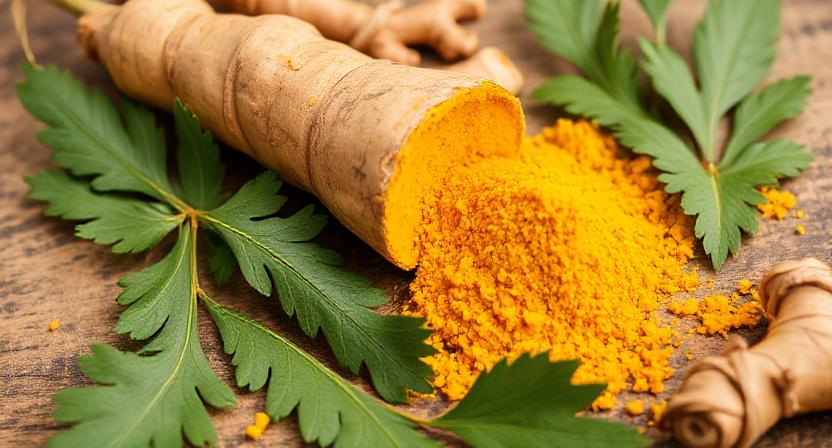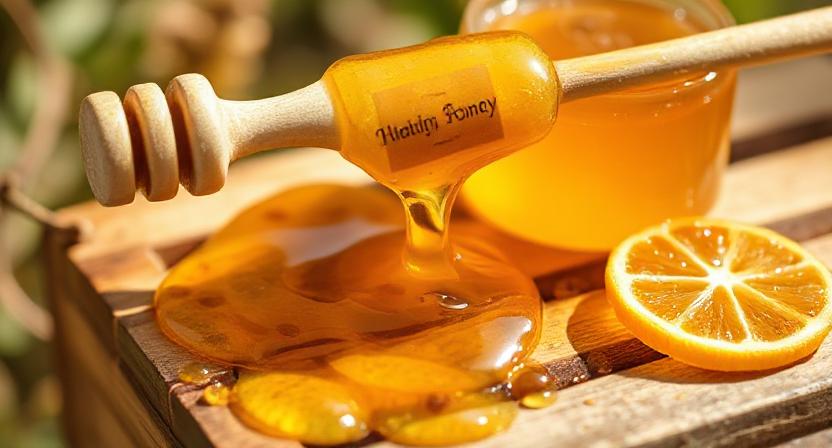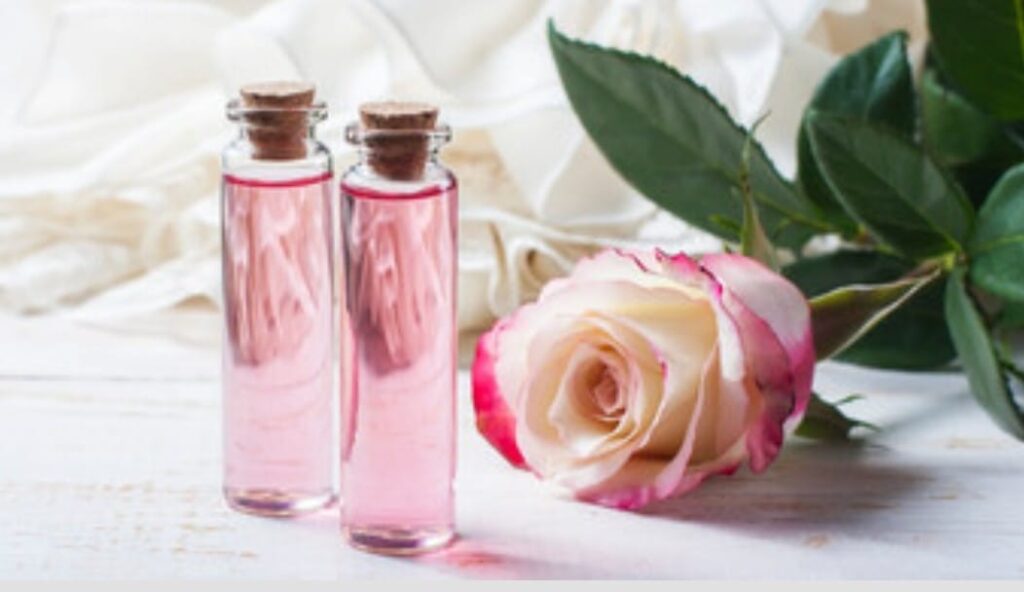From turmeric masks to herbal oils—these ancient Indian beauty hacks reveal the natural way to radiant, youthful skin. 100% chemical-free beauty secrets!
Natural beauty and wellness rely on incorporating natural ingredients for a natural glow, free from harsh chemicals, which enhances overall beauty and wellness.
Turmeric:

Turmeric, the miraculous natural element, can benefit people with many skin-enhancing properties. Here’s a little more about how to effectively make use of it:
Turmeric Benefits to The Skin
Anti-Inflammatory: It might be good for acne-suffering skin as it calms down redness and irritation.
Antimicrobial: Buffers the onset of new acne bacteria.
Antioxidant: Acts as a shield for skin from environmental damage and prevents damage from free radicals.
Brightening: Gives naturally glowing skin along with dark spots lightening.
How to Use Turmeric.
Turmeric Face Mask: You could create a masks based on turmeric with yogurt or honey and then apply that to your face. Rinse well in hot-warm water 15 minutes after.
Milk and Turmeric: Take turmeric powder with some milk and rub it on for various adverse effects, remove pigmentation and brighten up the complexion.
Aloe Vera and Turmeric: Make a moisturizing, calming mask for the acne skin using aloe gel and turmeric.
Turmeric with Gram Flour (Besan): Mix some turmeric, gram flour, and water to slough off dead skin cells and leave a bright skin.
Honey:


Honey’s many wellness advantages are a great alternative to natural beauty treatments. Yet, for starters, the primary means and
applications of honey are a handful:
Benefits of Honey for Skin
Honey is an incredibly useful moisturizing agent, what with its humectant properties to attract and keep moisture, making it a good physical choice for dry or parched skin.
Antibacterial Properties: Honey is packed full of antioxidants that secure the skin against free radicals, thereby avoiding premature aging and maintaining a youthful look. Its antibacterial and antimicrobial mechanisms help in the treatment or prevention of acne.
Wound Healing: Honey exhibits anti-inflammatory properties by allaying any inflamed skin cells34 as well as facilitating faster wound healing.
The natural acids found in honey, including gluconic acid, assist in gently exfoliating the skin and removing dead skin cells to reveal a fresh complexion.
Methods for Applying Honey on Skin
Honey Facemask: Apply raw honey directly on your facial for 15 to 20 minutes and then remove it using lukewarm tap water. Doing this will help in hydrating and soothing your skin.
Honey and Turmeric: Mix the two ingredients to help you clear acne and make your skin brighter. Leave this mask on your face for about 10-15 minutes before washing it off.
Honey and Lemon: A mixture of lemon juice and honey will lighten dark spots and adjust your skin tone. Leave this mask on your face for about 10-15 minutes before rinsing it off.
Honey and Oats: Crushed oats along with honey and these two will do the triple-powered mild exfoliating scrubbing. Use circular motions to gently massage the scrub over your face, then wash away with warm water.
Rose Water:

Rose water is a fantastic natural compound endowed with several beneficial properties to the skin.
The skin benefits of Rose Water
Natural Toner: Rosewater is an excellent natural toner that mitigates the pH of the skin and reduces excessive oil.
Hydrating: It revitalizes and hydrates the skin, imparting a fresh appearance.
These compounds further render it free from infections and guarantee the skin is given the exposure necessary for good health.
The abundance of antioxidants helps regenerate skin tissues and strengthen skin cells.
Anti-Aging: Regular application of rose water will reduce wrinkles and fine lines.
Utilization of Rose Water for Skin
Tonics: They soak a cotton pad with rose water and apply it to the face after cleansing. This helps in closing the pores and preparing the skin for moisturizer.
Facial Mist: To ware moisturized throughout the day, put rose water into a spray bottle, and keep it as a refreshing facial mist.
Face Masks: Mixing rose water with other ingredients, such as Fuller’s earth (multani mitti) or sandalwood powder, makes for lovely skin-soothing face masks.
Under-Eye Treatment: To reduce puffy eyes and dark circles, soak cotton pads in chilled rose water and place them on your eyes.
- Makeup Remover: You can create a mild yet effective makeup remover by combining a few drops of coconut oil with rose water.
Neem:
Neem is a potent natural compound endowed with several beneficial properties to the skin.

Antibacterial: Well-known for its stability with respect to strong antibacterial properties, neem heals skin problems such as acne.
Anti-Inflammatory: It alleviates sensitive skin by soothing redness and inflammation.
Antioxidant: This antioxidant-packed herb acts as a protector for the skin’s health against the harsh environmental damage and premature aging.
Healing: Neem helps in skin regeneration by healing wounds and scars.
Detoxifying: It uplifts and extracts impurities from the skin to keep it clean.
How to Use Neem for Skin
Neem Pack: Mix neem powder with water or rose water and use for 15 to 20 minutes; wash off. This reduces pigmentation and minimizes acne.
Neem Oil: Apply directly on skin for acne or on inflamed areas. Can also be mixed with other carrier oils like almond or coconut oil.
Neem and Turmeric: Mix neem powder, turmeric and yogurt to make a face mask to brighten the skin and reduce acne.
Neem Bath: Add neem leaves to your bath water for a great soak to treat skin disorders like psoriasis and eczema and to clean the skin.
Neem Toner: Boil neem leaves in a pot. Drain the water and use as a toner to control oil and prevent breakouts.
Sandalwood
a very much-praised natural ingredient in traditional Indian beauty rituals, is known for its soothing and restorative properties.
Benefits of Sandalwood for the skin:
Cooling: The inherent cooling properties of sandalwood can assist with sunburns and soothe irritated skin.
Brightening: It helps fade pigmentation and dark spots on the skin.
Anti-aging: The antioxidants in sandalwood help to prevent wrinkles and fine lines, which are both signs of the maturing process.
Antiseptic: These antiseptic properties help treat acne, pimples, and skin infections.
Aromatherapy: The soothing fragrance of sandalwood calms the mind and promotes restful sleep.
Sandalwood’s Application on the Skin or Face: Combine sandalwood powder with milk or rosewater for a paste that can be applied on the top layer of the skin. Rinse off with water after 15 to 20 minutes of facial application. This contributes to skin lightening and blemish reduction.
Complementary Herbs: Make a paste of sandalwood powder and milk sprinkled with turmeric. This is a very useful mask to heal acne and improve skin complexion.
Honey and Sandalwood: For a cool and moisturizing mask, combine sandalwood powder with a little honey and apply it. Let it settle for about 15 to 20 minutes and rinse with warm water.
Sandalwood Oil: Apply sandalwood oil mixed with a carrier oil (like coconut oil or almond oil) on your skin for calming effects and moisturization.
Aloe Vera: Make a soothing and moisturizing face mask using aloe vera gel combined with sandalwood powder; this is perfect for healing sore, irritated skin.
Aloe Vera:
Aloe Vera is a plant that is very popular and full of great medicinal value for the skin. Here are some of the benefits provided with Aloe Vera.
Benefits Provided by Aloe Vera to the Skin
Aloe Vera is a potent and versatile plant that brings nature’s bounty to a multitude of skin benefits.
Hydration: Aloe vera is extremely hydrating, and nourishes the skin without leaving a greasy feeling.
Calming Effect: Its astonishing anti-inflammatory properties can soothe reactions in very sensitive skin, at the same time making it perfect for small wounds and sunburns.
Acne Treatment: Aloe vera contains antibacterial properties thus treating acne and preventing future outbreaks.
Anti-Aging: Antioxidants, vitamins C and E imparted with other nutrients help in the process of reducing the visibility of wrinkles and fine lines.
Wound Healing: Aloe vera is known to expedite the healing of wounds and can also reduce the appearance of scars.
Method of Aloe Vera Application for Skin
Fresh aloe vera gel can be directly applied on your skin. Wash it off after about 20 min with lukewarm water. This will keep the skin hydrated and soothe it as well.
Aloe Vera and Honey: Blend aloe vera gel with honey for a hydrating and antibacterial mask. After applying, wash it off after 15 to 20 minutes.
Aloe Vera and Turmeric: Blend some turmeric with aloe vera gel to create a mask that brightens the skin and reduces acne. After applying, let it sit for 10 to 15 minutes and rinse it off.
Aloe Vera and Lemon Juice: Combine a few drops of lemon juice with aloe vera gel for a mask that can help reduce dark spots and even complexion. Applying it on your face, rinse after 10 to 15 minutes.
Aloe Vera and Cucumber: Mix cucumber juice with aloe vera gel to create a soothing, moisturizing mask that would help relieve burnt or irritated skin.
Coconut Oil:

Coconut oil is an amazing, all-natural product that nourishes and benefits skin in more ways than one.
Benefits of Coconut Oil for Skin
Anti-inflammatory-Coconut oil’s lauric acid is anti-inflammatory in nature. It helps modulate red spots, soothe skin irritations, and do away with swellings.
Antibacterial-Its antibacterial properties are useful in the treatment of acne and its prevention.
Deeply moisturizer- As coconut oil is rich in saturated fats, it regards deep moisturization and hydration of the skin as the best way of giving assistance to dry skin.
Anti-aging-Antioxidants present in coconut oil help shield the skin from free radical damage, reducing fine lines and wrinkle formation.
How to Use Coconut Oil for Skin
Moisturizer-After taking a bath or a shower, coconut oil is best applied to seal in moisture. Pay extra attention to the dry areas of the body, including elbows, knees, and feet.
Makeup Remover-The best natural makeup remover is coconut oil, which must be applied on your face with some massage and then cleaned off with a warm cloth.
Face Mask-Mix coconut oil with honey or turmeric to make an antibacterial and moisturizing face mask. After putting it on your face, rinse it after 15-20 minutes.
Lip Balm-Dab on a tiny bit of coconut oil to keep lips moisturized and supple.
Body Scrub-Coconut oil mixes well with sugar or sea salt to make an exfoliating body scrub. Massage onto your skin using circular motions and rinse off with warm water.
Gram Flour (Besan):

Gram flour, sometimes referred to as besan, is a mainstay in many traditional Indian beauty regimens because of its various skin-benefitting properties.
Benefits of Gram Flour (Besan) for Skin
Exfoliation: Gram flour is a great natural exfoliator that leaves the skin feeling clean and glowing by removing impurities and dead skin cells.
lightening: It gives the skin a natural shine by decreasing tanning and lightening the complexion.
Oil Control: Besan is perfect for oily and acne-prone skin since it helps to regulate excessive oil production.
Treatment for Acne: Its antimicrobial qualities aid in both preventing and curing acne.
Skin Tightening: Using gram flour regularly can help tighten the skin and make wrinkles and fine lines less noticeable. Besan, another name for gram flour, is a common ingredient in many traditional Indian beauty regimens.
How to Use Gram Flour (Besan) for Skin
Besan & Turmeric Mask: Make a paste out of gram flour, milk, yogurt, and a sprinkle of turmeric. After applying it to your face, rinse it off after 15 to 20 minutes. This mask aids in skin lightening and pigmentation reduction.
Besan with Lemon Juice: To make a paste, mix gram flour, lemon juice, and a small amount of water. After applying it to your face, rinse it off after ten to fifteen minutes. This aids in skin lightening and tan reduction.
Besan and Honey: Combine gram flour and honey to make a moisturizing and exfoliating mask. Apply the mask to your face and rinse it off after 15 to 20 minutes.
Besan and Rose Water: To make a calming and toning mask, mix gram flour with rose water. After applying it to your face, rinse it off after 15 to 20 minutes.
Besan and Aloe Vera: To make a mask that soothes and hydrates the skin, combine gram flour and aloe vera gel. After applying it to your face, rinse it off after 15 to 20 minutes.
FAQs
Ancient beauty secrets from ancient Indian natural ingredients and tried-and-true techniques.
Turmeric, neem, saffron, rosewater, ghee, aloe vera, and sandalwood have all demonstrated antiseptic and healing properties.
While turmeric is an anti-inflammatory, neem contains antibacterial and antifungal properties.
Saffron brightens the skin and rosewater is generally used as a toner. Formulations could be further compounded to create nourishing masks, scrubs, and treatments for glowing radiant skin.
Can I use turmeric and milk together for my face?
Yes, turmeric powder may be mixed with milk for skin benefits. The turmeric naturally brightens the skin, while milk brings in anti-inflammatory properties.
They, therefore, help soothe any irritation and redness of the skin. There is a basic recipe; a turmeric-and-milk mask is known to leave a smooth paste that does work well to exfoliate the skin and help reduce dark patches.
What happens if we apply curd and turmeric on the face daily?
Factors to consider about daily application of curd and turmeric on the faceTurmeric has been used for thousands of years to brighten the skin, exfoliate, moisturize, and soothe inflammation.
However, in some people, it may cause irritation, so it is advisable to use it only 2 or 3 times a week and to perform a patch test to ensure safety.
What does honey do for the face?
Honey, as an effective antioxidant and healing agent, also repairs cells damaged by sunlight.
With action against bacteria, honey kills acne-causing strains and simultaneously hydrates the skin, thereby imparting a healthy sheen.Active ingredients for honey can be used either directly or added to other ingredients to form face masks, but raw, unpasteurized honey is considered best.















